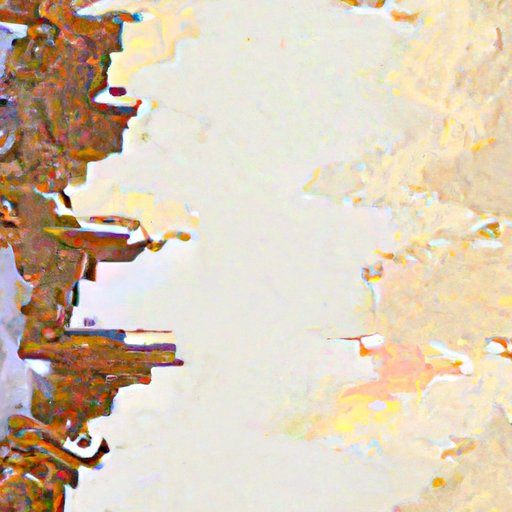Introduction
In recent years, artificial intelligence (AI) has become increasingly integrated into our lives. From self-driving cars to intelligent virtual assistants, AI is transforming the way we interact with technology. Now, AI is also being used to create art, raising questions about its potential implications for the art world. But can you actually make money selling AI-generated art? In this article, we’ll explore the legal implications, pros and cons, and strategies for making money from selling AI-generated art.
What is AI-Generated Art?
AI-generated art refers to artwork created using computer algorithms or machine learning techniques. This type of artwork can be generated in a variety of ways, including generative adversarial networks (GANs), which use two neural networks that compete against each other to generate new images. Other approaches involve feeding data sets of images into an algorithm and allowing it to generate new artwork based on those images.
Overview of the Legal Implications of Selling AI-Generated Art
The legal implications of selling AI-generated art are complex and vary from country to country. In the United States, copyright law states that only “original works of authorship” can be copyrighted. Since AI-generated art is created by a computer program and not by a human author, it cannot be copyrighted. However, some countries, such as the UK, have laws that recognize computer-generated works as original works of authorship and thus afford them copyright protection.
Examining the Pros and Cons of Selling AI-Generated Art
Selling AI-generated art comes with both benefits and challenges. Let’s take a look at some of the pros and cons of selling AI-generated art.
Benefits of Selling AI-Generated Art
One of the main benefits of selling AI-generated art is that it can be produced quickly and easily. This makes it a great option for artists who want to produce a large volume of artwork quickly and efficiently. Additionally, since AI-generated art is created by a computer program, it can produce results that would be impossible for a human artist to achieve.
Challenges of Selling AI-Generated Art
While there are many benefits to selling AI-generated art, there are also some challenges. One of the biggest challenges is that AI-generated art is often seen as less “authentic” than traditional art, which could make it more difficult to sell. Additionally, since AI-generated art is not eligible for copyright protection, it can be difficult to prevent others from copying or reproducing it.
How to Make Money Selling AI-Generated Art
If you’re interested in selling AI-generated art, there are a few key steps you should follow to ensure success. Here are some tips for how to make money selling AI-generated art.
Finding the Right Platforms
The first step in selling AI-generated art is to find the right platforms. There are a number of online marketplaces that specialize in selling AI-generated art, such as Artfinder, DeviantArt, and Redbubble. These platforms provide a great way to reach potential buyers and showcase your work.
Setting Prices
Once you’ve found the right platform, the next step is to set prices for your AI-generated art. When setting prices, it’s important to consider the cost of production, the value of the artwork, and the potential market for the artwork. Additionally, it’s important to remember that since AI-generated art is not eligible for copyright protection, the price should reflect this fact.
Creating Effective Promotion Strategies
Finally, it’s important to create effective promotion strategies for your AI-generated art. This includes leveraging social media, networking with other creators, and engaging with potential buyers. Additionally, it’s important to stay up to date on trends in the industry to ensure that your artwork remains relevant.
What it Takes to Market AI-Generated Art
Marketing is an essential part of selling AI-generated art. To effectively market your artwork, it’s important to understand your audience and what they’re looking for in an artwork. Additionally, it’s important to utilize social media to reach potential buyers, as well as network with other creators to build relationships and gain insights into the industry.
The Potential for AI-Generated Art to Transform the Art World
AI-generated art has the potential to transform the art world in a number of ways. For one, it could lead to a shift in traditional art markets, as AI-generated artwork could become more widely accepted and sought after. Additionally, it could open up new possibilities for creative opportunities, as AI-generated art can produce results that would be impossible for a human artist to achieve.
Exploring the Unique Creative Possibilities of AI-Generated Art
AI-generated art offers unique creative possibilities. For example, GANs can be used to generate completely new images, while other algorithms can be used to combine existing images in interesting ways. Additionally, AI-generated art can be used to create animations and videos, as well as interactive artwork.
Conclusion
In conclusion, selling AI-generated art is a viable option for artists who want to make money from their work. While there are legal implications to consider, as well as challenges associated with selling AI-generated art, there are also many benefits. By finding the right platforms, setting prices, and creating effective promotion strategies, artists can make money from selling AI-generated art. Additionally, AI-generated art has the potential to transform the art world and open up new creative possibilities.
(Note: Is this article not meeting your expectations? Do you have knowledge or insights to share? Unlock new opportunities and expand your reach by joining our authors team. Click Registration to join us and share your expertise with our readers.)
